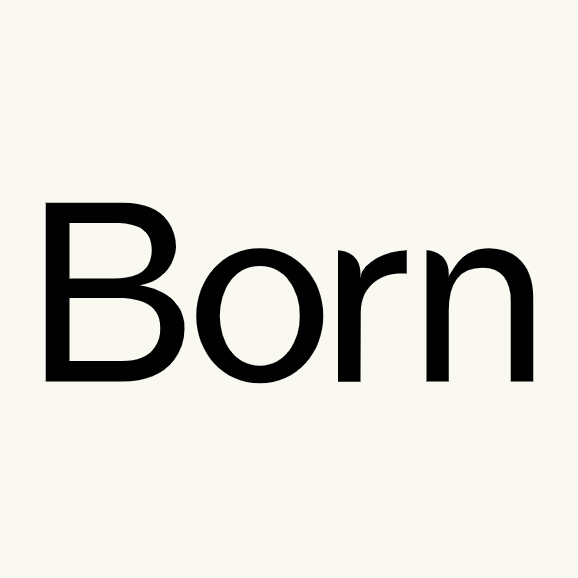We connect you with the best and most reliable agency partners for your projects. All DAN members are thoroughly vetted and ready to deliver exceptional results.

Featured Agencies
Top digital agencies of Sydney in January 2025
-
Luminary
Luminary has been creating award-winning digital experiences since 1999. They specialise in large-scale projects implemented with Kentico, Episerver, Sitecore & Umbraco.Services- Content Marketing
- eCommerce
- Mobile App Development
- UX Design
- Web Development
- Web Design
- Digital Strategy
- Software Development
- Digital Product Design
- Marketing Automation
Industries- Healthcare
- Fashion & Retail
- Education
- Finance
- Travel & Tourism
- Hospitality
- Non-Profit Organization
- Government
Select a service type to discover the best digital marketing agencies!
DAN Member Agencies
Digital marketing companies in Sydney
All Sydney agencies in this directory have been vetted and verified against the following criteria:
- Portfolio Quality
- Reliable Services
- Sectoral Expertise
- Team Transparency
If you have any feedback regarding the agencies, please contact us.
-
Luminary
HQ: Melbourne+3 cities- Australia
- Adelaide
- Brisbane
- Sydney
4.8The rating displayed is a weighted average derived from verified reviews across trusted platforms, further validated by the DAN team for agency authority.Premium MemberLuminary has been creating award-winning digital experiences since 1999. They specialise in large-scale projects implemented with Kentico, Episerver, Sitecore & Umbraco.Services- Content Marketing
- eCommerce
- Mobile App Development
- UX Design
- Web Development
- Web Design
- Digital Strategy
- Software Development
- Digital Product Design
- Marketing Automation
Industries- Healthcare
- Fashion & Retail
- Education
- Finance
- Travel & Tourism
- Hospitality
- Non-Profit Organization
- Government
51-20012 AwardsFeatured Agency -
Jaywing
HQ: Sydney+1 city- Australia
- Melbourne
Gold MemberData, creative and performance. None of this happens by chance. Find out more about our multi-award winning, data-powered integrated agency.Services- B2B Marketing
- Branding
- Content Marketing
- Creative
- Digital PR
- Digital Strategy
- eCommerce
- Email Marketing
- Inbound Marketing
- Marketing Automation
- Online Advertising
- PPC
- SEO
- UX Design
- Web Design
- Web Development
Industries- Education
- Energy
- Fashion & Retail
- Finance
- FMCG
- Insurance
- Legal
- Real Estate
51-200 -
WEBITMD
HQ: Los Angeles+2 cities- USA
- New York
- Australia
- Sydney
4.7The rating displayed is a weighted average derived from verified reviews across trusted platforms, further validated by the DAN team for agency authority.Gold MemberWEBITMD is a digital growth agency providing performance marketing, sales, CRM, and automation campaigns to organizations in order to supercharge their growth.Services- B2B Marketing
- Branding
- Content Marketing
- Creative
- Digital Marketing
- Digital Strategy
- eCommerce
- Email Marketing
- Inbound Marketing
- Marketing Automation
- Online Advertising
- PPC
- SEO
- UX Design
- Web Design
- Web Development
Industries- Aviation
- Education
- Fashion & Retail
- Hospitality
- IT & Technology
- Luxury
- Media & Entertainment
- Real Estate
- Startup
11-50Featured Agency -
UX Connections
HQ: London+2 cities- USA
- New York
- Australia
- Sydney
Gold MemberUX Connections, the UX agency with UX/UI consultants to help your digital product succeed. We provide specialised, flexible, on-site UX help to our clients.Services- Digital Product Design
- Mobile App Development
- Software Development
- UX Design
Industries- Finance
- FMCG
- Telecommunications
- Travel & Tourism
11-50 -
Holiday
HQ: SydneyStandard MemberAs a full-service digital agency, we love making elegant websites, apps, ads and solutions for impact and value. Partnering with us feels like being on Holiday.Services- Branding
- Creative
- Digital Strategy
- eCommerce
- Email Marketing
- Online Advertising
- Web Design
- Web Development
Industries- Fashion & Retail
- Finance
- Government
- Healthcare
- Insurance
- IT & Technology
- Luxury
- Non-Profit Organization
11-50
Best Digital Marketing Agencies by Services in Sydney
Discover the top-notch digital marketing agencies in Sydney by browsing through wide range of services
- AI Marketing Agencies in Sydney
- B2B Marketing Agencies in Sydney
- Branding Agencies in Sydney
- Content Marketing Agencies in Sydney
- Creative Agencies in Sydney
- Digital PR Agencies in Sydney
- Digital Product Design Agencies in Sydney
- Digital Strategy Agencies in Sydney
- eCommerce Agencies in Sydney
- Email Marketing Agencies in Sydney
- Inbound Marketing Agencies in Sydney
- Influencer Marketing Agencies in Sydney
- Mobile App Development Agencies in Sydney
- Online Advertising Agencies in Sydney
- PPC Agencies in Sydney
- SEO Agencies in Sydney
- Social Media Marketing Agencies in Sydney
- Software Development Agencies in Sydney
- UX Design Agencies in Sydney
- Video Production Agencies in Sydney
- Web Design Agencies in Sydney
- Web Development Agencies in Sydney
Free Listings
Digital marketing services in Sydney
-
McCorkell
McCorkell is a leading Integrated Marketing Agency for B2B and B2C brands in Asia Pacific.
HQ: Sydney -
nucleo
A digital agency in Sydney, providing web design & development, e-commerce websites and custom developments with prooven results.
HQ: Sydney -
Scaleup Consulting Australia
Committed to providing your startup or small business with personalized IT support, including expertise from developers and architects.
HQ: Sydney -
We Are Better
We are a marketing and advertising agency that businesses trust to deliver great results. We provide all the services you need to take your brand to the next level.
HQ: Sydney -
Nightjar
A digital product company. We solve complex business problems by unifying brand, experience and technology to deliver transformative results — at velocity.
HQ: Sydney -
Creative Click
We're a branding and web design agency based in Sydney, Australia. We work with small to medium businesses that want to stand out online.
HQ: Sydney -
Hello Different
An ecommerce agency that enables data-driven growth of online businesses, through website design, email marketing & ecommerce strategy.
HQ: Sydney -
Persistent Systems
Persistent Systems is a trusted digital engineering and enterprise modernization partner for global market leaders across industries.
HQ: Sydney -
Marzipan Media
Sydney-based, content creators focused on making your brand shine online. Delivering websites, conversions and videos for people and places.
HQ: Sydney -
Liquid Digital
Your complete digital solution for business. We offer strategic planning, expert execution, and ongoing support for all your digital needs.
-
Microknot
A software development company based in Sydney, offering services such as web & mobile app development, data analytics, software integrations and more.
HQ: Sydney -
Storytellers Australia
Storytellers Australia is your own dedicated content marketing and design team, creating better B2B user experiences for your business.
HQ: Sydney -
Acquisition Studio
A leading values-based agency. We deliver exceptional outcomes for clients and their customers.
HQ: Sydney -
Remap Online
We provide Creative, Content and Commerce solutions across Web, Search and Social. Certified Google Ads Agency, and an Official Facebook Marketing Partner.
HQ: Sydney -
AdCraft Studio
Adcraft Studio is a Wollongong-based digital marketing and advertising agency. Our primary focus is to make your business successful.
HQ: Sydney -
Ardent Communications
More than a full-service digital agency—we are an extension of your team. We offer collaborative in-depth support to develop and execute effective strategies.
HQ: Sydney -
Persuaders
Strategic design & comms consultancy specialising in design, workshops and training to help you persuade your audience.
HQ: Sydney -
Australian Internet Advertising
An end to end digital aquisition partner for small and emdium enterprises. We use marketing psychology and digital platforms.
HQ: Sydney -
Airteam
Airteam are Australia’s trusted software design and development company. We partner with Australian businesses to create custom software that drives positive change.
HQ: Sydney -
Poseidon Digital
'Results Driven Digital Marketing. Is your business on the frontline of the digital world? Let's get you revenue shifting results.'
HQ: Sydney -
Creative Resort
Creative Resort is a creative advertising agency based in the lower north shore of Sydney, Australia.
HQ: Sydney -
Ambire
Sydney indie digital marketing agency providing management of Paid Media campaigns in Google, Facebook, Instagram and Bing, SEO, Display and Programmatic Media Buying.
HQ: Sydney -
HENJAY
At HENJAY, we help businesses expand their online presence effectively to connect with, engage, and convert more customers in new markets.
HQ: Sydney -
One Egg Digital
One Egg is about that collaborative approach to work, that extra piece of creativity that we add over and above other pre-packaged mixes in the market.
HQ: Sydney -
Insil
Insil offer the agility and dedication of an independent agency with the backing of considerable resources, technology and expertise.
HQ: Sydney -
Reef Digital
Reef is an agency based in Sydney with a vision to create a digital ecosystem where every element works in harmony for optimal client results.
HQ: Sydney -
Tzu & Co.
We're a solution-agnostic marketing consulting firm, with a backbone in data analytics and market research. We help challenger businesses find clarity and make better decisions.
HQ: Sydney -
Deepend
Deepend is strategic design consultants that are experts in digital experience and product development.
HQ: Sydney -
Multimediax
Growth focused Digital Marketing Agency delivering holistic solutions & ROI through proven multi-channel strategies.
HQ: Sydney -
Webential
Webential renders Dedicated Offshore Resources, including designers, developers, and marketers to help firms scale up their bandwidth.
HQ: Sydney -
Nifty Marketing Australia
Nifty Marketing, a leading online marketing agency, providing web design, SEO, Social media, Google Ads, , digital signage, graphic design and more.
HQ: Sydney -
Uplers
Whether you’re a company looking for the right talent or a talent looking for the right company, Uplers got you covered!
HQ: Sydney
A digital marketing agency designs and executes strategies to help businesses succeed online. They work on boosting your visibility, whether by optimizing your website for search engines, creating engaging ad campaigns, or building your brand’s presence on social media platforms.
These digital marketing agencies in Sydney act as problem-solvers.
They identify where your business struggles online and offering solutions to increase customer engagement and revenue.
Using tools like analytics and performance trackers, digital marketing companies in Sydney continually refine their approach to ensure that every effort produces tangible outcomes.
Whether it’s creating a blog post, managing your online reputation, or designing a sleek, user-friendly website, a digital marketing agency simplifies the process of reaching your ideal customers.
Hiring a digital marketing agency in Sydney offers numerous advantages, especially if you’re looking to make a lasting impact online.
Sydney is a diverse city with businesses ranging from creative startups in Surry Hills to large enterprises in the CBD.
Local agencies know how to tailor strategies to appeal to the different audiences across the city. They also understand the importance of targeting specific areas, such as using local SEO to attract customers in hotspots like Parramatta or the Northern Beaches.
A Sydney-based digital marketing agency can help you scale your efforts quickly. They bring the tools, resources, and expertise needed to support your goals, from launching a new product to expanding your audience.
Another key benefit of hiring a digital marketing agency in Sydney is their ability to offer a range of integrated services:
- SEO to improve your visibility on search engines
- PPC advertising to drive immediate and targeted traffic
- Social media marketing to foster meaningful audience connections
- Web design to create a polished and professional online presence
- Content creation to deliver engaging and high-quality messaging
Working with an agency also means gaining access to advanced tools and technology as they use data analytics, performance trackers, and market research tools to ensure that your investment is well spent and continuously optimized for success!
| Digital Marketing Agency | Freelancer | |
|---|---|---|
| Local Knowledge | Deep understanding of Sydney’s industries and audiences. | Limited exposure to diverse local markets. |
| Resources | Access to specialized teams and tools. | Works independently with fewer resources. |
| Scalability | Easily adjusts to your business needs. | Limited capacity to handle growth. |
| Connections | Strong local networks for partnerships. | Fewer professional relationships. |
| Reliability | Backup teams ensure continuity. | Availability can be unpredictable. |
| Strategy | Focuses on long-term growth. | Prioritizes short-term tasks. |
Digital marketing agencies in Sydney offer a variety of services aimed at helping businesses grow their online presence and reach their target audience effectively.
Here’s a closer look at what digital marketing agencies in Sydney can do:
Search Engine Optimization (SEO): They fine-tune your site to rank higher on Google, using strategies tailored to Sydney’s unique search habits and local competition.
Pay-Per-Click (PPC) Advertising: Experts craft ad campaigns that get you quick results without wasting your budget, focusing on leads that actually convert.
Social Media Management: Agencies build vibrant communities on platforms like Instagram and LinkedIn, combining local insights with creative strategies to engage your audience.
Content Marketing: They create content that feels relatable and valuable, like blogs and videos tailored to your Sydney-based customers.
Web Design & Development: From sleek café sites to corporate portals, agencies deliver user-friendly designs that drive action.
Email Marketing: Personalized campaigns keep your audience coming back, turning casual subscribers into loyal customers.
Analytics & Reporting: They track every click and conversion, giving you actionable insights to fine-tune your strategy.
- Local SEO Services: Optimizing for Sydney suburbs, agencies help you dominate “near me” searches and appear in local directories.
- Branding and Creative Design: From standout logos to a cohesive brand voice, agencies ensure your business is memorable.
- E-Commerce Marketing: They maximize sales for online stores with smart product listings, targeted ads, and a frictionless shopping experience.
- Influencer Marketing: Agencies connect you with Sydney’s local influencers to reach niche audiences with authentic collaborations.
- Video Production & Marketing: Eye-catching videos grab attention across platforms like TikTok and YouTube, giving your brand a dynamic edge.
- Online Reputation Management: They help protect your image by managing reviews and addressing feedback to build trust.
- Conversion Rate Optimization (CRO): Agencies tweak your website’s design and flow to turn visitors into paying customers.
- Voice Search Optimization: Forward-thinking strategies ensure your business is ready for voice-driven searches on Alexa or Google Assistant.
- Event Marketing: For Sydney events, they run campaigns to boost attendance and keep the buzz alive on social media.
Digital marketing agency pricing in Sydney depends on what services you need, how complex your campaigns are, and the agency’s level of experience.
For small to medium-sized businesses, the monthly cost usually ranges from $700 to $10,000.
If you’re looking for basic services like managing social media or running a few PPC ads, you might pay on the lower end. On the other hand, more advanced strategies, such as full-service SEO or large-scale ad campaigns, can cost more.
Some agencies in Sydney also offer project-based pricing or hourly rates, which can range from $100 to $250 per hour, depending on the scope of work.
For startups or small businesses, some agencies have affordable packages starting as low as $500 per month for specific services like local SEO.
Before deciding, you definitely should clearly discuss your goals and budget with potential agencies. Many Sydney-based agencies are flexible and can customize their offerings to suit your needs.
| Service | Estimated Monthly Cost (AUD) |
|---|---|
| SEO | $700 – $3,000 |
| PPC Advertising | $1,000 – $5,000 |
| Social Media Management | $800 – $4,000 |
| Web Design (one-time) | $3,000 – $15,000 |
| Content Marketing | $1,000 – $5,000 |
Asking the right questions is crucial for assessing an agency’s expertise and ensuring they’re a good match for your business needs.
- Can you share case studies or success stories with Sydney-based businesses?
This helps you understand how familiar the agency is with Sydney’s market and whether they’ve successfully worked with businesses like yours. - How do you adapt your strategies to fit Sydney’s market trends and audience preferences?
Sydney’s market is diverse, so tailored strategies ensure the agency knows how to target specific groups effectively. - What tools and software do you use to track and manage campaigns?
Knowing the tools they rely on gives you insight into how campaigns are monitored and optimized for better performance. - What metrics do you use to measure success, and how often will you share updates?
This shows how the agency defines success and ensures their priorities align with your business goals. - Who will be working on my account, and what is their experience in my industry?
It’s important to know the expertise and background of the team handling your campaigns to build trust. - How do you keep up with the latest digital marketing trends and changes in algorithms?
Sydney’s fast-paced market requires agencies to stay updated on trends and algorithm changes to keep campaigns effective. - How do you handle underperforming campaigns?
A good agency should have a clear process for identifying issues and testing new strategies to improve results. - Can you explain your pricing structure and any additional fees?
Transparent pricing ensures you understand what you’re paying for and helps avoid hidden costs. - Do you specialize in any industries or services?
Some Sydney agencies focus on specific sectors like real estate, e-commerce, or hospitality. Knowing this can help you decide if they’re the right fit. - What’s your approach to local SEO and targeting Sydney’s neighborhoods?
If you’re looking to attract local customers, the agency should have a plan for improving your visibility in areas like Bondi, Parramatta, or Surry Hills. - How do you manage communication and updates?
Clear communication and regular updates are essential to keep you informed about the progress of your campaigns.
Here are the leading digital marketing agencies in Sydney:
| Agency | DAN Rating | Services | Industry Expertise |
|---|---|---|---|
| AdVisible | 5 | SEO PPC Social Media Marketing Web Design Branding |
Education Food & Beverage Luxury Real Estate Wellness & Fitness |
| Shout Digital Marketing | 4.9 | Content Marketing Digital PR SEO PPC Web Development |
Automotive Fashion & Retail Finance Food & Beverage Real Estate |
| Crowd | 4.9 | B2B Marketing Branding Content Marketing Digital Strategy PPC |
Automotive Education FMCG Food & Beverage Government |
| Wonderful Digital | N/A | Branding UX Design Digital Strategy eCommerce Web Development |
Education Food & Beverage Finance Government Media & Entertainment |
| DIJGTAL | N/A | Branding Content Marketing Social Media Marketing SEO PPC |
Automotive Fashion & Retail Finance Gaming FMCG |
| In Marketing We Trust | N/A | SEO PPC Content Marketing Social Media Marketing Digital Strategy |
Education Fashion & Retail Finance Travel & Tourism Insurance |
| Jaywing | N/A | SEO Content Marketing Web Design Branding Digital Strategy |
Education Finance Fashion & Retail FMCG Real Estate |
| UX Connections | N/A | UX Design Mobile App Development Software Development Digital Product Design Digital Strategy |
Finance FMCG Telecommunications Travel & Tourism |
| Emote Digital | N/A | SEO Digital Strategy Social Media Marketing eCommerce PPC |
Automotive Beauty & Cosmetics Finance FMCG Government |











































































